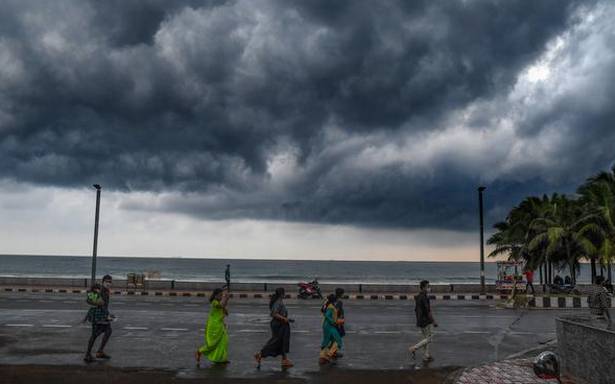‘The system is likely to move nearly westwards and cross north Andhra Pradesh-south Odisha coasts between Kalingapatnam and Gopalpur,’ says an IMD bulletin.
The cyclonic storm Gulab over north-west and adjoining west-central Bay of Bengal is likely to cross north Andhra Pradesh-south Odisha coasts around midnight of September 26 instead of evening as predicted earlier.
“The cyclonic storm Gulab over north-west and adjoining west-central Bay of Bengal moved nearly westwards with a speed of 10 kmph during the past six hours and lay centered over north-west and adjoining west-central Bay of Bengal about 270 km east-southeast of Gopalpur [Odisha] and 330 km east of Kalingapatnam [Andhra Pradesh],” says the latest bulletin issued by India Meteorological Department on September 26.
“The system is likely to move nearly westwards and cross north Andhra Pradesh-south Odisha coasts between Kalingapatnam and Gopalpur around midnight of Sunday,” it said.
High alert has been sounded in seven districts as Gulab is hurtling towards the coast. Evacuation of people has begun in Ganjam and Gajapati districts.
About 700 people, including many pregnant women, have been shifted in Gajapati district. Around 8,000 people would be evacuated to safer places. There is a possibility of landslips taking place in Gajapati district if heavy rain occurs under the influence of Gulab.
Intermittent rain has started in south Odisha districts while high tidal waves were seen at Gopalpur along the Odisha coast. Most of the hotels at Gopalpur have been vacated. Men and machineries have been prepositioned to deal with the aftermath of the cyclone in many districts.
The East Coast Railway has cancelled 28 trains, diverted five trains and rescheduled eight. Similarly, 11 trains have been regulated in South East Central and South Central Railway jurisdictions.
“In view of forecast of heavy rain with cyclonic wind, all necessary precautions have been taken by ECoR. Intensive and extensive patrolling in areas forecast to be affected are being ensured and monitored. Stationary watchmen have been deployed where heavy rainfall is likely. Bridges are kept under watch. Appropriate steps have been taken for electrical and signalling installations,” said ECoR in a statement.
Source: Read Full Article

